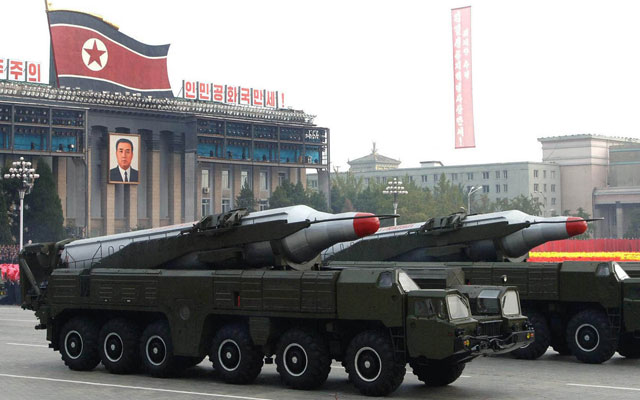North Korea continues to escalate the situation on the Peninsula, most recently by telling international diplomats it will not be able to guarantee their security after April 10.
The ongoing crisis demonstrates the benefits of missile defense for the protection of the U.S. homeland and forward-deployed troops, and the assurance of allies abroad. Heritage predicted benefits of missile defenses in its nuclear games research, which focused on the dynamic of missile defenses in a world with multiple nuclear-armed actors.
Candidate Barack Obama did not share this view. “I will cut investments in unproven missile defense systems,” he stated in 2008. He actually kept that promise (except the programs weren’t wasteful), cutting investments in U.S. missile defenses by more than 10 percent (about $1.16 billion) the first year he was in office. He decreased the number of Ground-Based Midcourse Defense (GMD) Interceptors in the U.S. from 44 planned to 30. He cancelled the Airborne Laser program, the Multiple Kill Vehicle program, and the Kinetic Energy Interceptor. He mothballed the sea-based X-band radar, a powerful tracking capability providing data to U.S. missile defense systems to increase their probability of interception. Over his first term, he underfunded missile defense by almost $6 billion compared to President Bush’s missile defense plan.
Obama was wrong, and now he is recognizing it. In the face of aggressive North Korean rhetoric, including threats to attack the U.S. with nuclear weapons, the President decided that the Bush Administration missile defense plan was worthwhile after all and announced an increase in the number of GMD interceptors to 44. Then he decided to send the sea-based X-band radar closer to North Korea, just in time to watch the North Koreans readying their ballistic missiles on launch pads.
Sadly, by reversing Bush’s GMD decision and cancelling other missile defense programs, the Obama Administration is making the U.S. play catch-up with a threat, rather than being ahead of it. Just recently, the Administration announced it will “restructure” the SM-3 Block IIB program that would provide additional capabilities to shoot down long-range ballistic missiles, especially from Iran. North Korea and Iran cooperate on ballistic missile and nuclear weapons programs. The U.S. must increase its missile defense funding and develop and deploy a layer-comprehensive ballistic missile defense program, including missile defense interceptors in space.
It would take only 33 minutes for a missile to reach the U.S. from anywhere in the world. The United States must reverse its missile defense course to ensure it will stay ahead of the threat in the future, rather than play catch-up.























